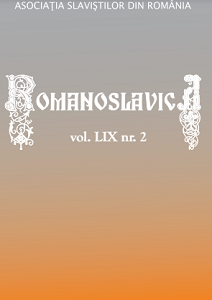Eliminarea barierei lingvistice – element determinant al interacțiunii sino-ruse între a doua jumătate a secolului al XVII-lea și sfârșitul secolului al XIX-lea
The Elimination of the Language Barrier – A Determining Element of Sino-Russian Interaction Between the Second Half of the 17th Century and the End of the 19th Century
Author(s): Cristian ChircaSubject(s): Language studies, Sociolinguistics, Eastern Slavic Languages, 17th Century, 18th Century, 19th Century
Published by: Asociația Slaviștilor din România
Keywords: language barrier; interaction; identification; activation; school; Russian Spiritual Mission; Lifanyuan; cultural space;
Summary/Abstract: In the 17th century, Russia's identity began to be shaped by the interaction between the Slavic population and an increasingly structured multi-ethnic population. This situation amplified the tendency of the Russians to establish cultural borders with an imaginary Orient which included China. Therefore, the Slavic-Orthodox cultural space began to interact with the Sino-Confucian cultural space in a process that went through three phases until the 19th century: identification, activation, and adaptation. The Sino-Russian interaction, although mediated by the common cultural background with Mongolian origins, was shielded by a language barrier that affected Sino-Russian relations. As a result, Emperors Peter I and Kangxi, two great leaders of the era, initiated the first government measures to establish schools to train translators/interpreters for the Chinese (Manchu) and Russian languages. In this regard, at the beginning of the 18th century, the Chinese language was included in Russia as a field of study in the project of the future Academy of Sciences in St. Petersburg, and in China it was established the Russian language school, under the authority of the Palace Chancellery (Neige) and the Chamber for the Vasal Territories (Lifanyuan). Along with the schools of translators, a major role in the progressive elimination of the language barrier was played by the Russian Spiritual Mission in Peking, founded in 1715.
Journal: Romanoslavica
- Issue Year: LIX/2023
- Issue No: 2
- Page Range: 19-35
- Page Count: 17
- Language: Romanian

